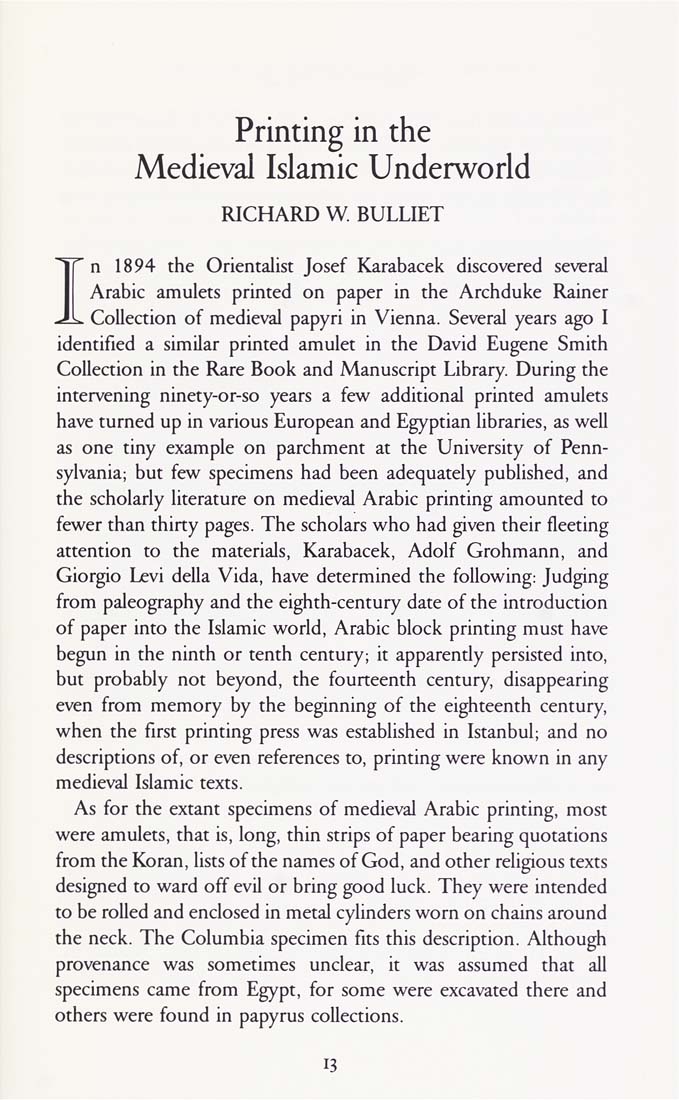Columbia Library columns (v.36(1986Nov-1987May))
(New York : Friends of the Columbia Libraries. )
|
||
|
|
|
|
| v.36,no.3(1987:May): Page 13 |

Printing in the Medieval Islamic Underworld RICHARD W BULLIET In 1894 the Orientalist Josef Karabacek discovered several Arabic amulets printed on paper in the Archduke Rainer Collection of medieval papyri in Vienna. Several years ago I identified a similar printed amulet in the David Eugene Smith Collection in the Rare Book and Manuscript Library. During the intervening ninety-or-so years a few additional printed amulets have turned up in various European and Egyptian libraries, as well as one tiny example on parchment at the University of Penn¬ sylvania; but few specimens had been adequately published, and the scholarly literature on medieval Arabic printing amounted to fewer than thirty pages. The scholars who had given their fleeting attention to the materials, Karabacek, Adolf Grohmann, and Giorgio Levi della Vida, have determined the following: Judging from paleography and the eighth-century date of the introduction of paper into the Islamic world, Arabic block printing must have begun in the ninth or tenth century; it apparently persisted into, but probably not beyond, the fourteenth century, disappearing even from memory by the beginning of the eighteenth century, when the first printing press was established in Istanbul; and no descriptions of, or even references to, printing were known in any medieval Islamic texts. As for the extant specimens of medieval Arabic printing, most were amulets, that is, long, thin strips of paper bearing quotations from the Koran, lists ofthe names of God, and other religious texts designed to ward off evil or bring good luck. They were intended to be rolled and enclosed in metal cylinders worn on chains around the neck. The Columbia specimen fits this description. Although provenance was sometimes unclear, it was assumed that all specimens came from Egypt, for some were excavated there and others were found in papyrus collections. |
| v.36,no.3(1987:May): Page 13 |







